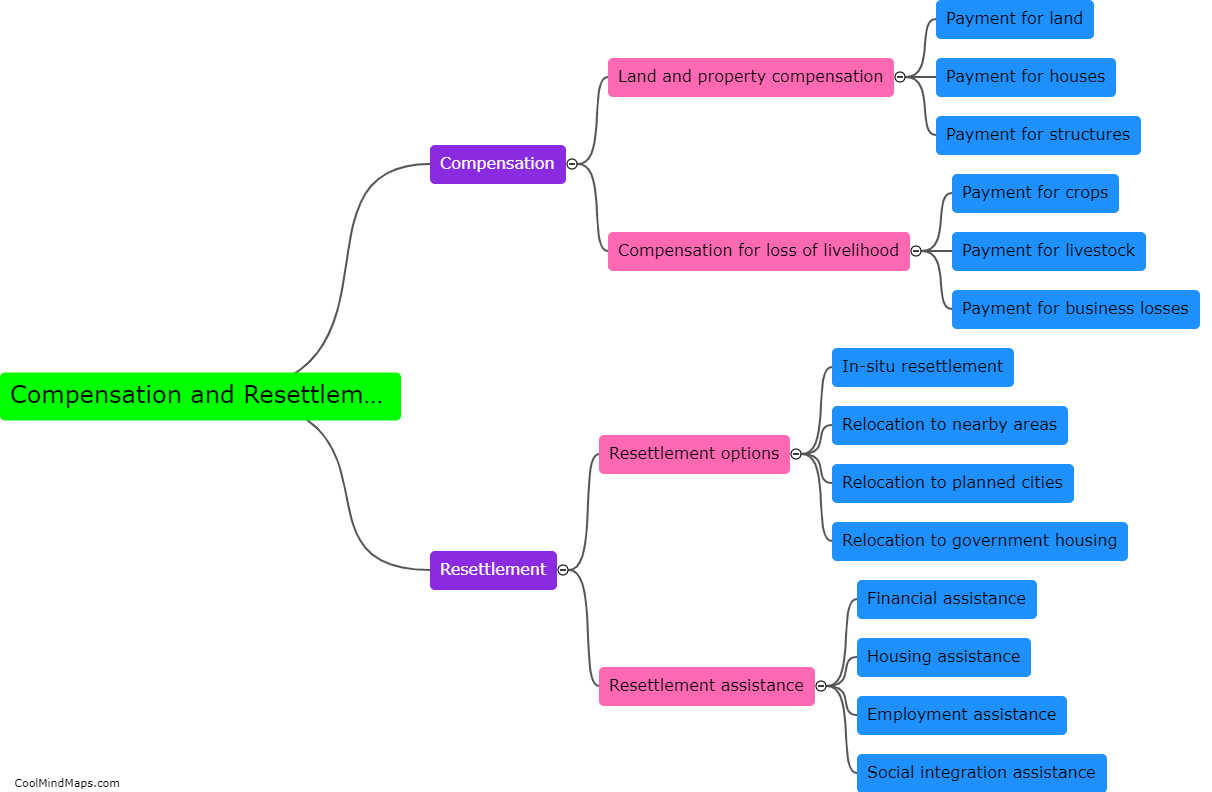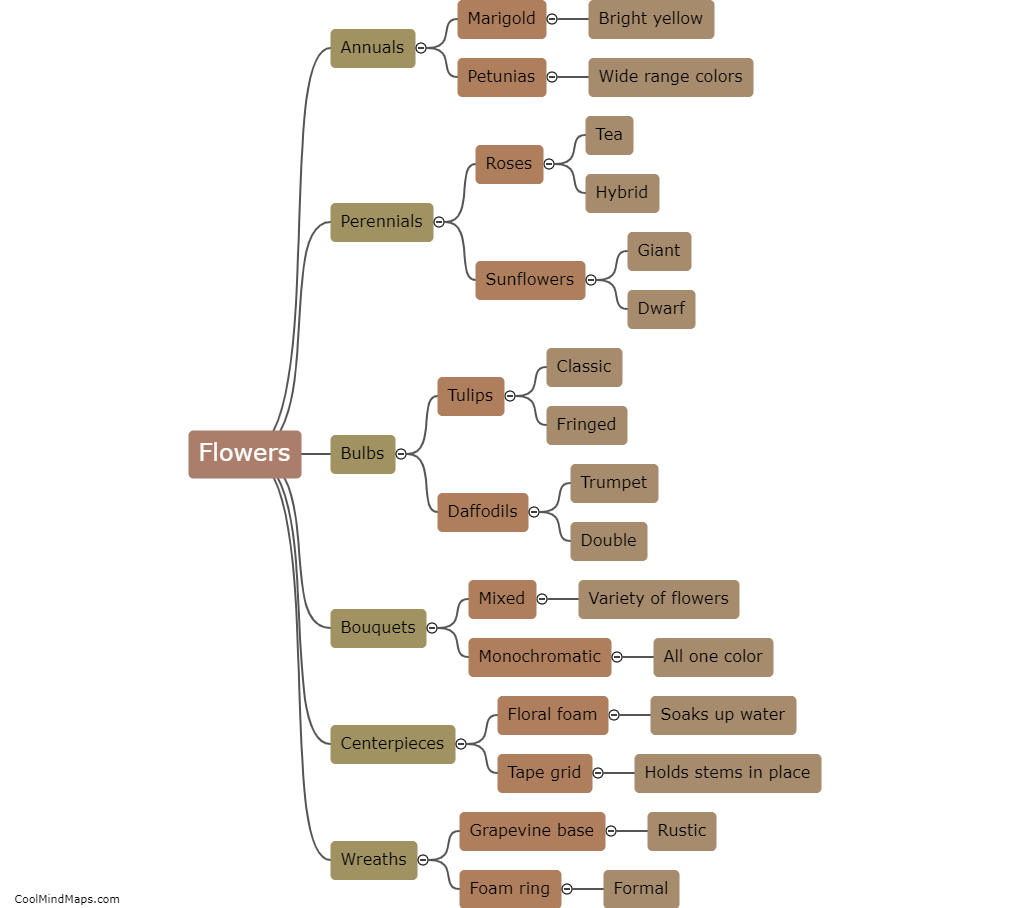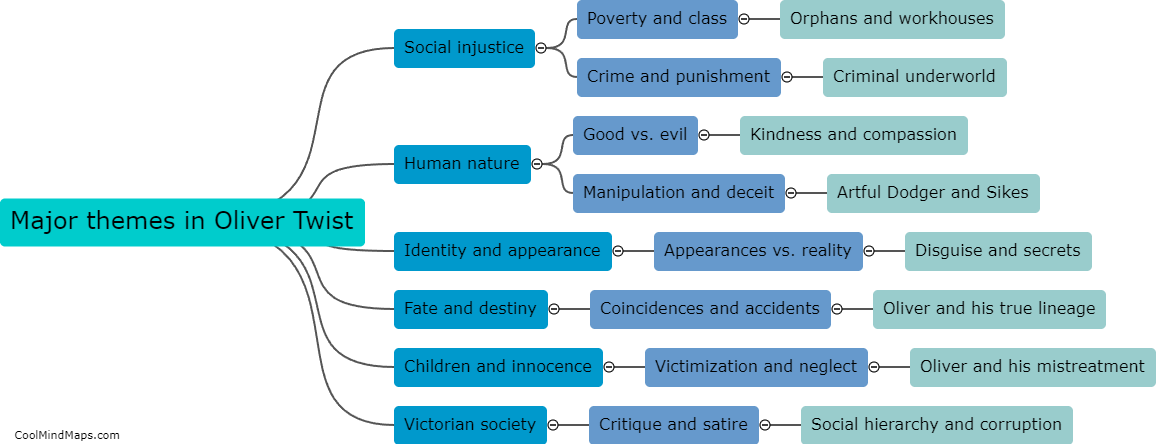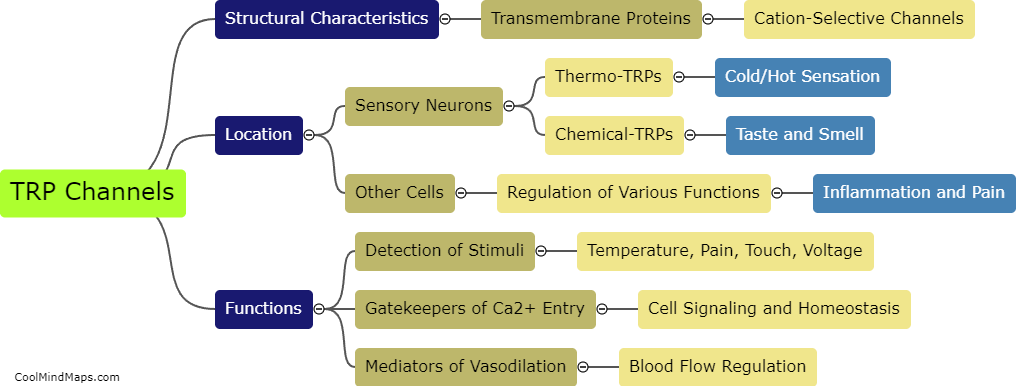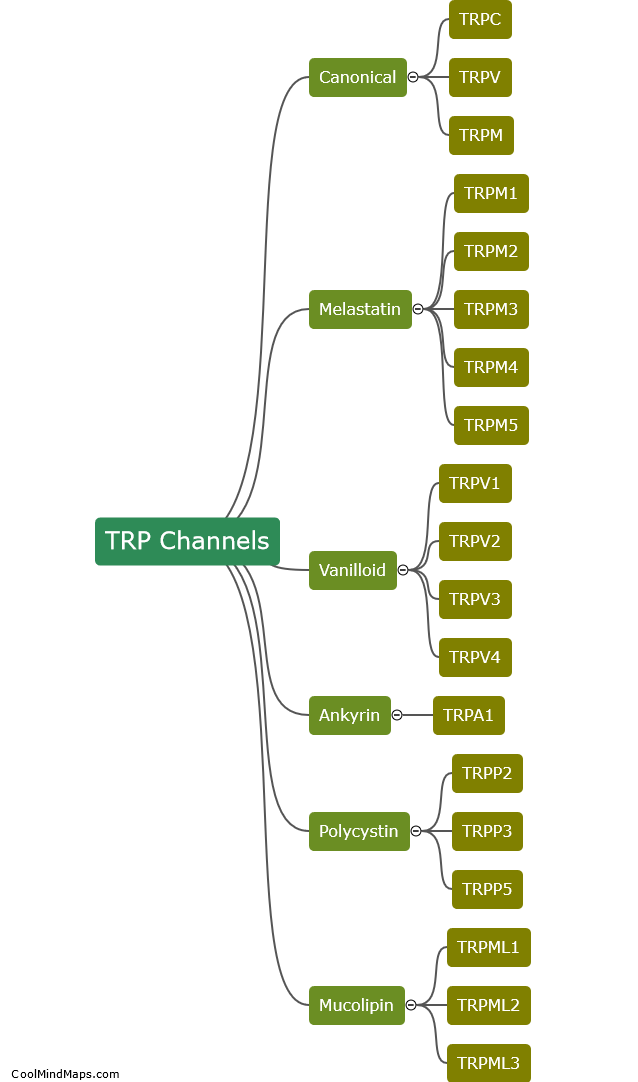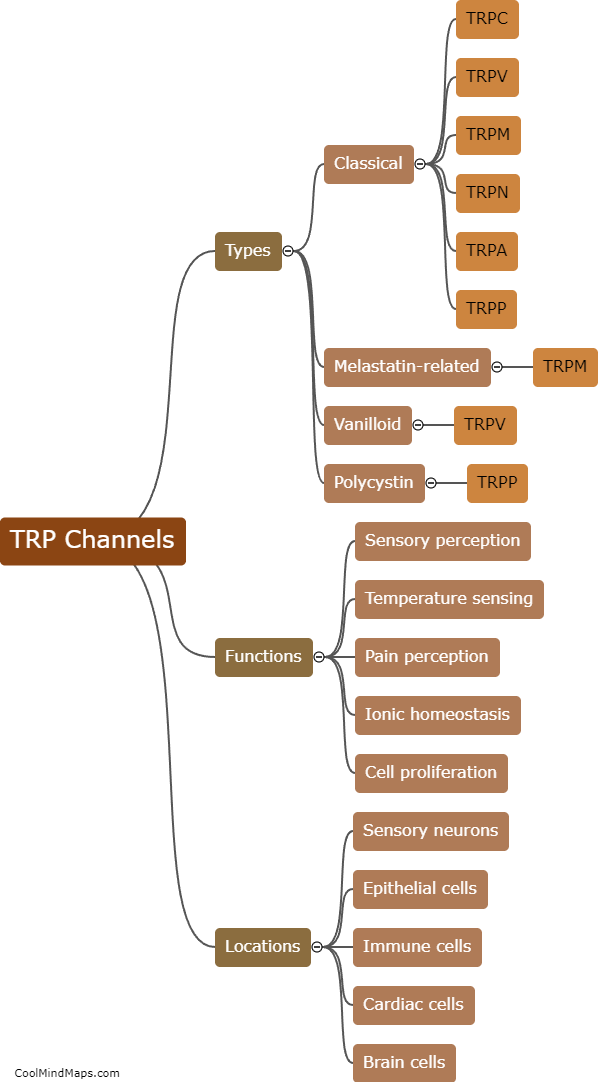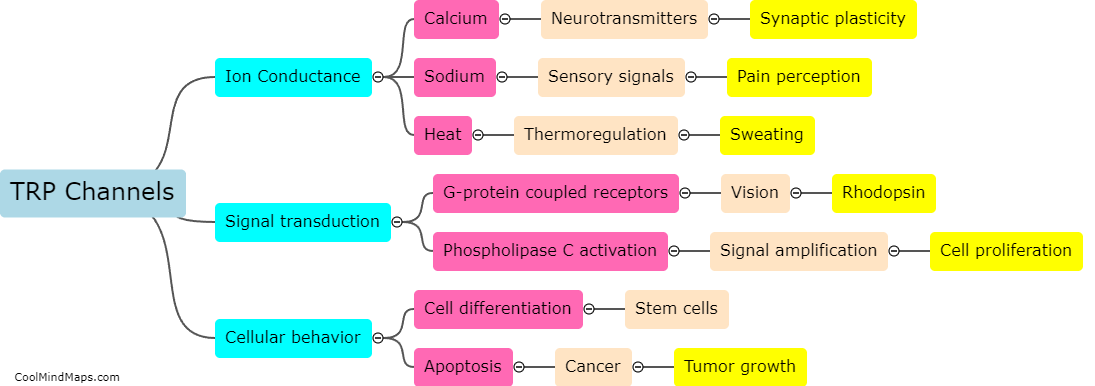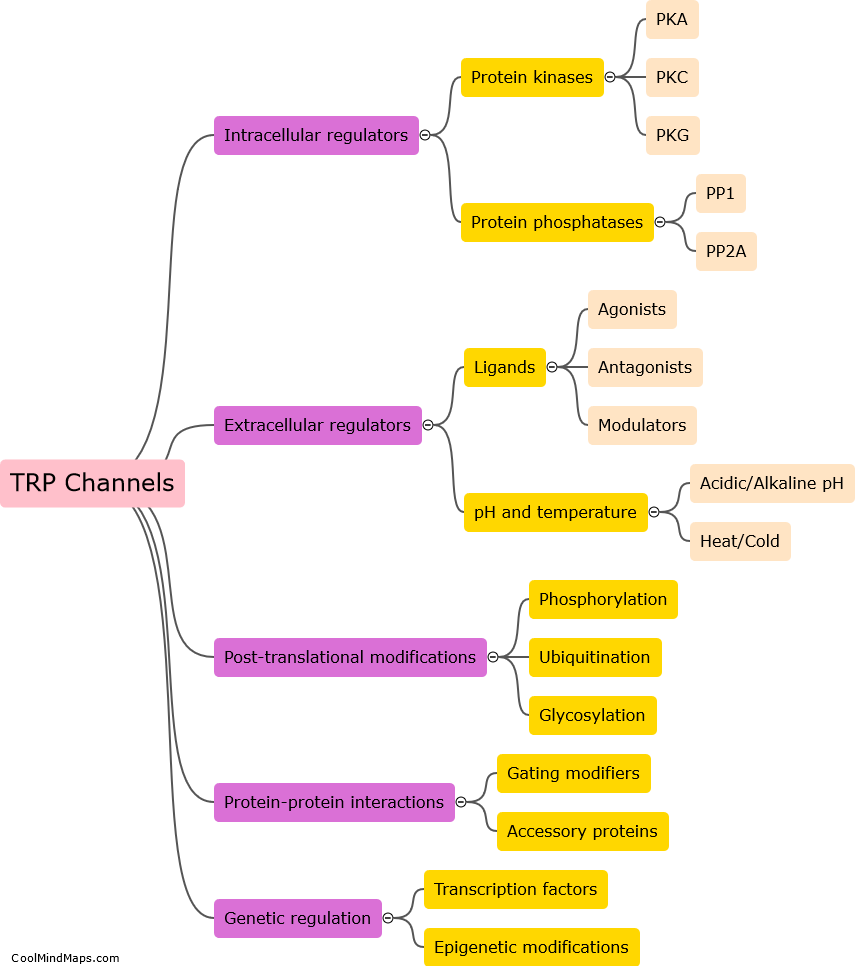How do TRP channels work?
TRP channels, or transient receptor potential channels, are a family of ion channels found in numerous cells throughout the body. These channels are responsible for regulating a wide range of physiological processes by allowing ions, such as calcium or sodium, to flow across the cell membrane. Some TRP channels are activated by changes in temperature, while others respond to chemical or mechanical stimuli. Once activated, the channel undergoes a conformational change that allows ions to flow through it. This results in a change in the electrical potential across the cell membrane, which then activates downstream signaling pathways that result in the desired physiological response. Dysfunction of TRP channels has been linked to numerous diseases and conditions, making them an important target for drug development.

This mind map was published on 22 June 2023 and has been viewed 119 times.
